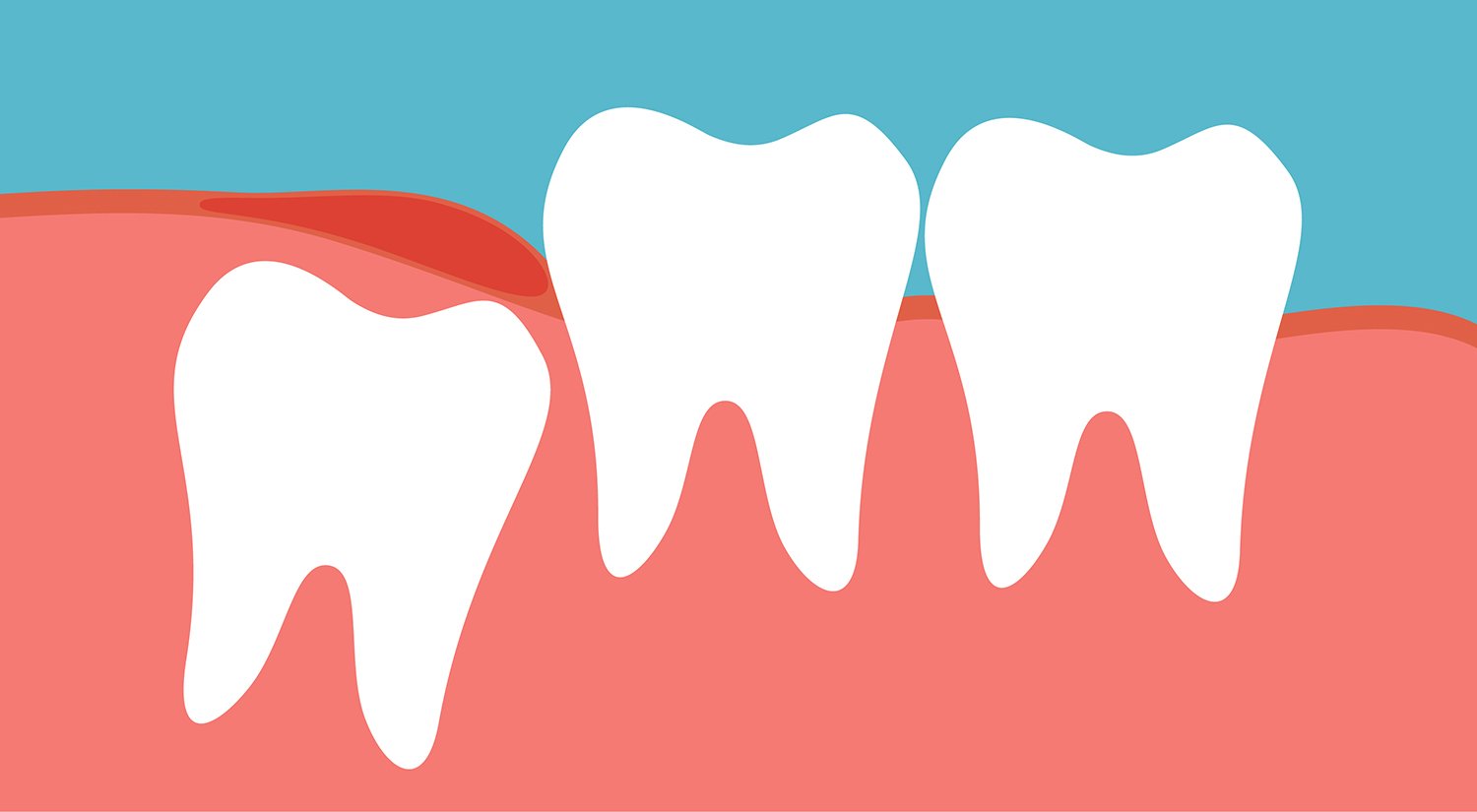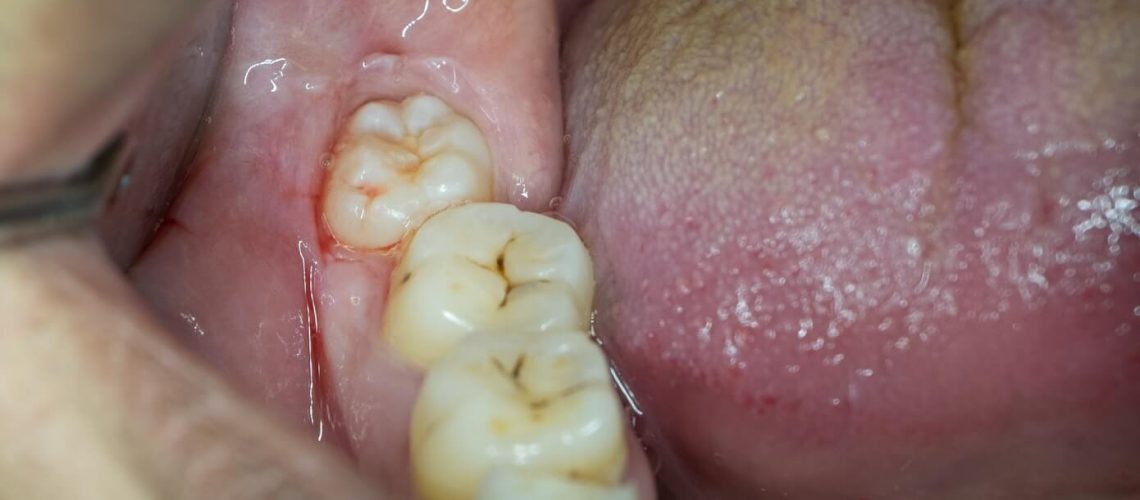Although all the ailments and symptoms seem to be attributed directly or indirectly to wisdom teeth, the latter cannot be responsible for everything that happens in the mouth and the face (orofacial region) of a person. The third molars can indeed cause several problems during their development and their eruption, or even after their extraction, but it seems too often that, when one cannot find another cause for certain symptoms in the orofacial region, the wisdom teeth quickly become the ideal scapegoat, sometimes with reason, but very often also without scientific foundation!
- The scientific literature reports that several symptoms and problems can be associated with wisdom teeth, which, we say, represent “surprise boxes” when they are not downright “time bombs.” Indeed, a wisdom tooth that has always been asymptomatic can suddenly cause a variety of problems at any age.
- We will try here to share things by describing what could be connected to these third molars and what is not or is less likely to be.
- In some cases, and they are not uncommon, wisdom teeth do not cause any symptoms, despite the possible complications they can cause. It is, therefore, important to have them regularly monitored by a dentist from adolescence if they are not extracted.

The dentist is the health practitioner who has the expertise to assess them during their growth, determine their direction of eruption and the potential problems they may cause, as well as make recommendations on their management and extraction.
- The third molars are sometimes absent, even in adulthood, so it is possible that they are never a problem, but we must not ignore them!
STRONG PROBABLE SYMPTOMS
Symptoms that are most likely related to wisdom teeth are accepted and well documented in the scientific literature; they are part of the common and frequent symptoms. It should be noted that the different symptoms described below can be mild or severe, depending on each individual.
LOCALIZED OR RADIATING PAIN
- This pain, when associated with wisdom teeth, is most often felt in the immediate area of wisdom teeth. It can also be felt or irradiated in the region of the temporomandibular joints ( TMJs ), in the back of the mouth near the ears or the upper or lower jaw.

- In such a case, pain is often a sign that the third molar is advancing in the alveolar bone and the gum towards the surface or against the adjacent tooth. She is trying to erupt.
- This pain can be cyclical, like some other symptoms, because teething can be done “in waves” with moments of calm.
PAINFUL GUMS
- Sensitive, swollen, red (inflamed) or bleeding more easily in the back of the mouth can be associated with wisdom teeth.
- Be careful, gum bleeding and redness can very often be symptoms of a gum or periodontal disease which must be taken seriously; these symptoms have no connection with wisdom teeth.

